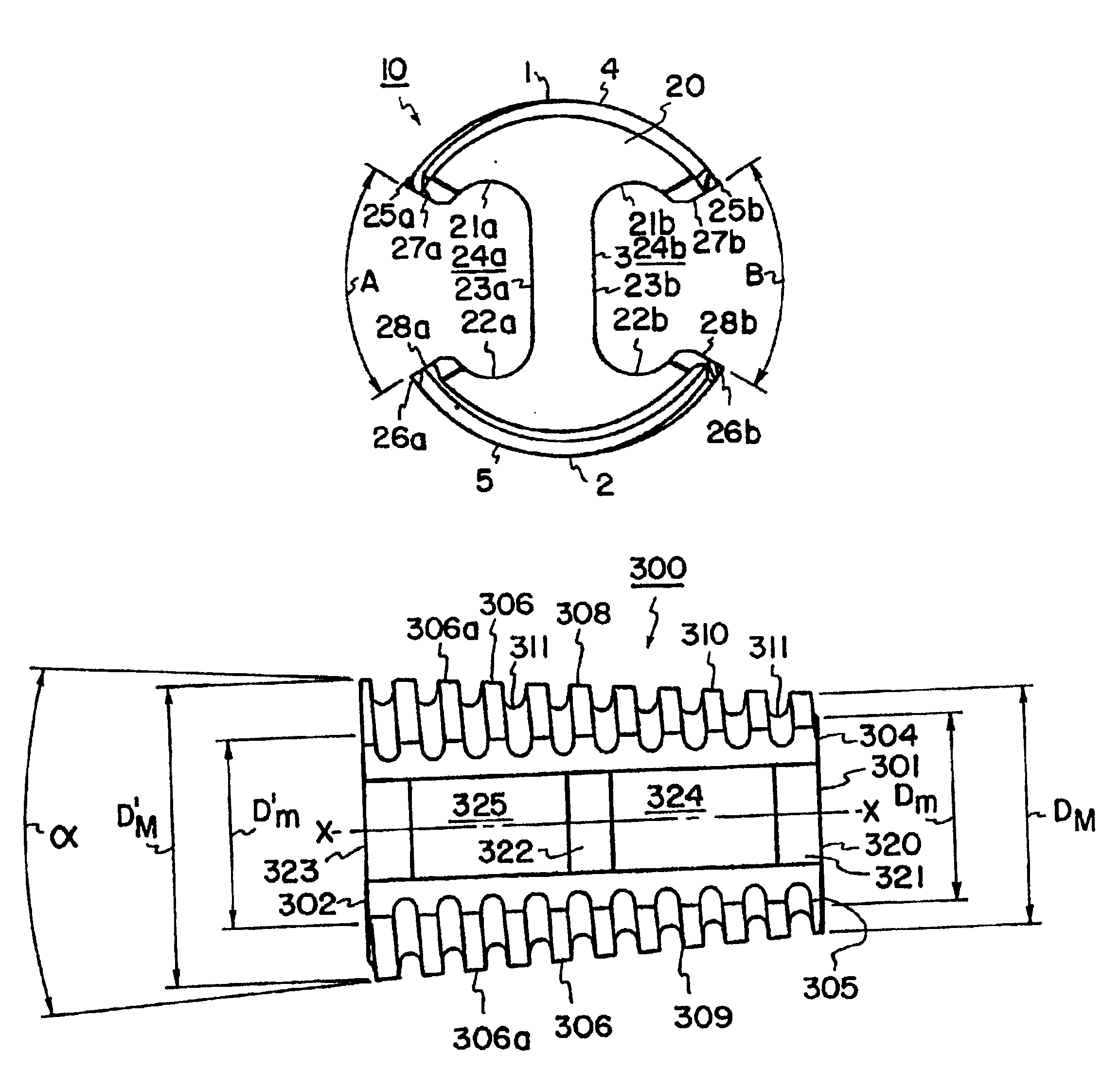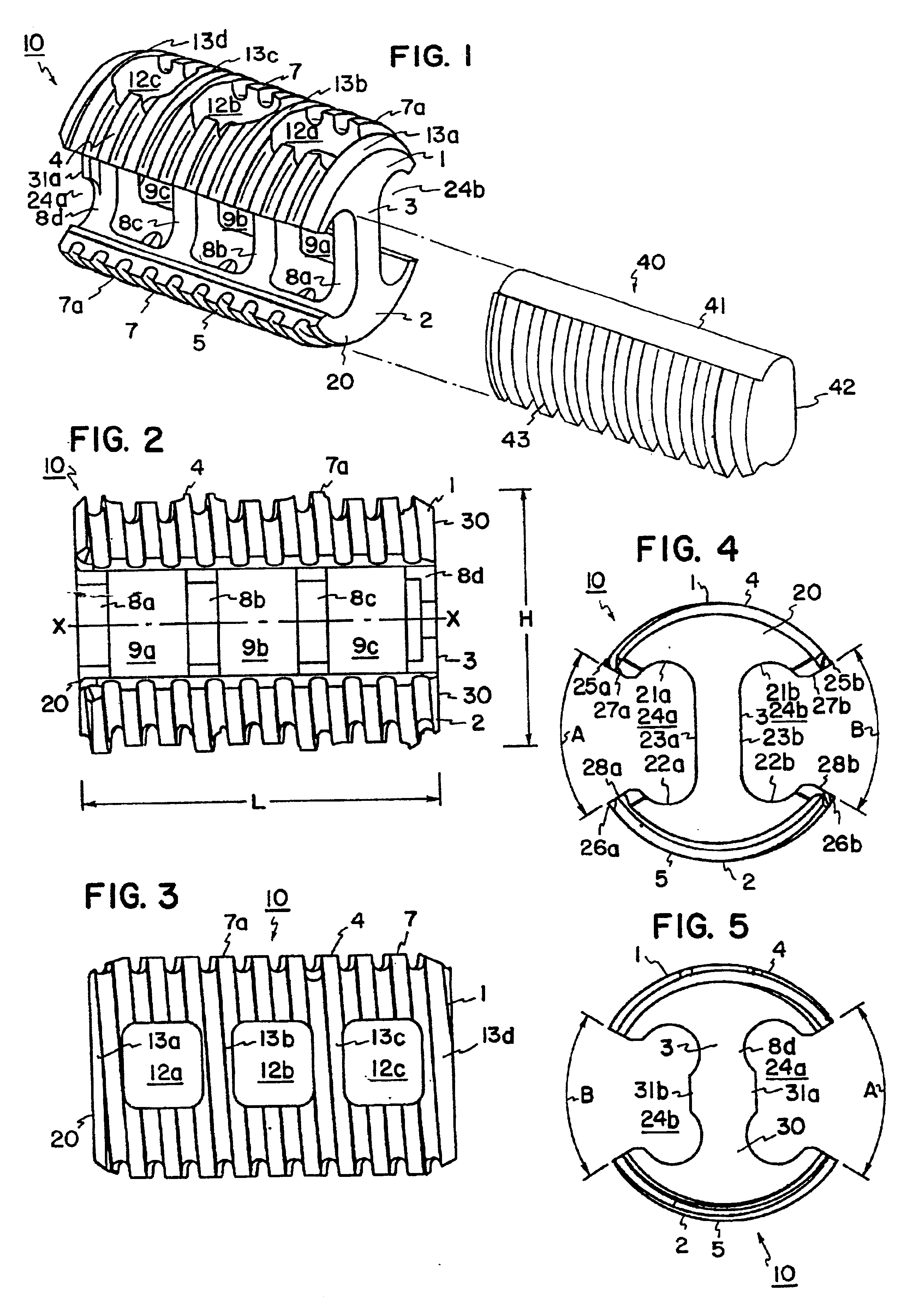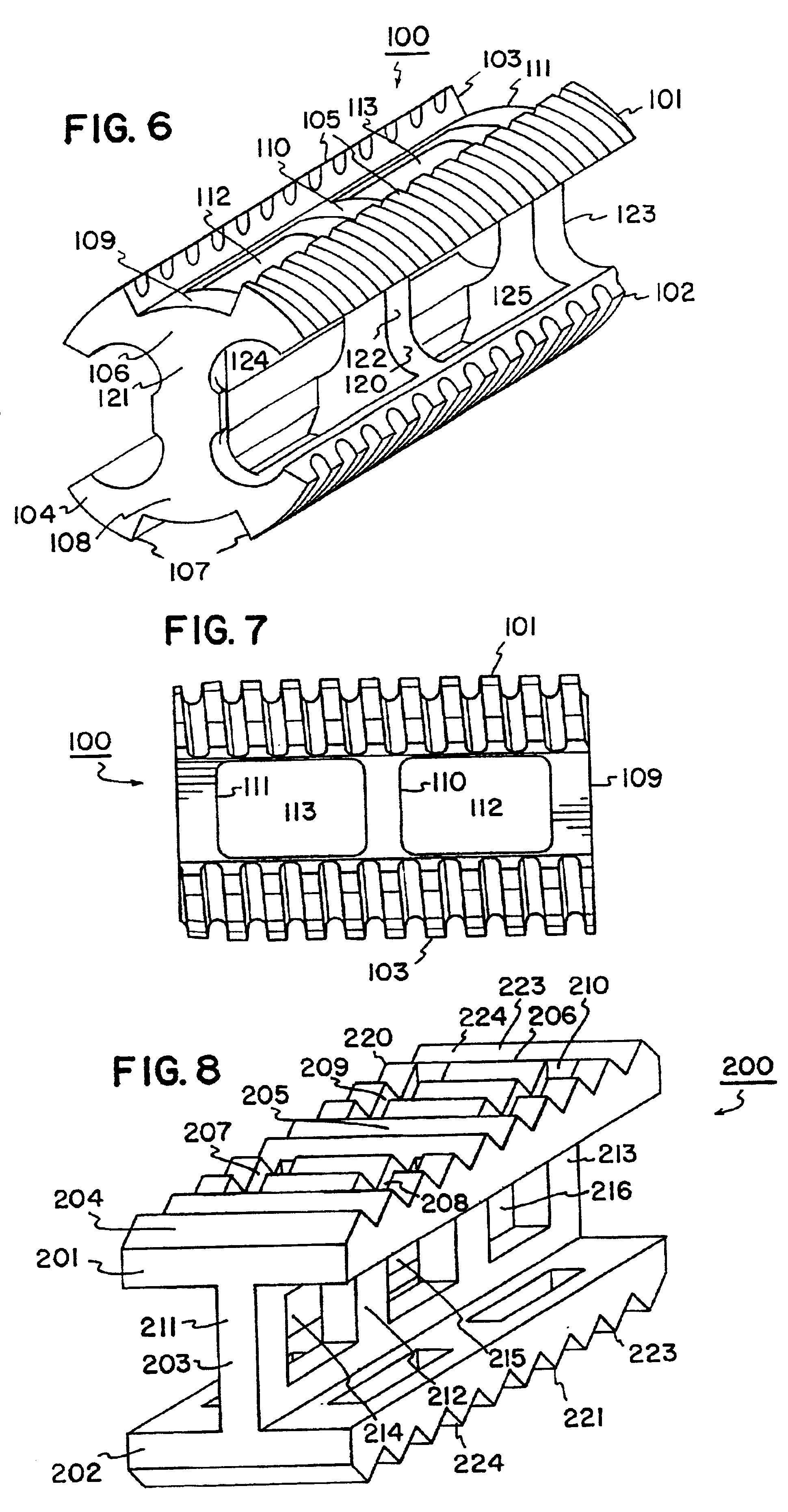Intevertebral implant with reduced contact area and method
- Summary
- Abstract
- Description
- Claims
- Application Information
AI Technical Summary
Benefits of technology
Problems solved by technology
Method used
Image
Examples
first embodiment
FIGS. 1-5 illustrate an implant of the invention having a first transverse member 1 and a second transverse member 2 spaced apart by a central support member 3. When inserted between opposing vertebrae, each transverse member is oriented transverse to the longitudinal axis of the vertebral column and the central support member is oriented parallel to the longitudinal axis of the vertebral column. Thus, the transverse members can also be referred to as a “cranial transverse member” and a “caudal transverse member” to indicate that when inserted between opposing vertebrae, one transverse member is oriented cranially and the other transverse member is oriented caudally.
The first transverse member 1 has a first bearing surface 4 and the second transverse member 2 has a second bearing surface 5. The first bearing surface 4 and the second bearing surface 5 include a pattern 7 for anchoring the implant within an insertion bore. The illustrated pattern 7 is a portion of a helical thread 7a ...
second embodiment
Referring now to FIGS. 6-7, an implant 100 is illustrated. The implant 100 includes four generally linear thread segments 101, 102, 103 and 104. Linear thread segments 101 and 103 provide a bearing surface 105 of a first transverse member 106 and linear thread segments 102 and 104 provide a bearing surface 107 of a second transverse member 108. As illustrated best in the top view of FIG. 7, thread segments 101 and 103 (and 102 and 104) are maintained in spaced apart alignment by transverse supports 109, 110 and 111. In the illustrated embodiment there are two openings 112 and 113 between transverse supports 109, 110 and 111. (The relative arrangement of the second transverse member 108 having thread segments 102 and 104 is identical to that just described for the first transverse segment 106). Transverse members 106 and 108 are maintained in spaced apart alignment by central support member 120. In the illustrated embodiment, central support member 120 comprises columns 121, 122 and ...
embodiment 100
The insertion tool 500, with threaded or unthreaded grips as just described, can also to include two additional grips that slide into the regions between thread segments 101 and 103 and 102 and 104 of implant embodiment 100. Such additional grips are illustrated, for example, in FIGS. 24, 27, 28 and 31 of co-assigned U.S. Pat. No. 5,609,636, the entire disclosure of which is incorporated herein by reference.
PUM
 Login to View More
Login to View More Abstract
Description
Claims
Application Information
 Login to View More
Login to View More - R&D
- Intellectual Property
- Life Sciences
- Materials
- Tech Scout
- Unparalleled Data Quality
- Higher Quality Content
- 60% Fewer Hallucinations
Browse by: Latest US Patents, China's latest patents, Technical Efficacy Thesaurus, Application Domain, Technology Topic, Popular Technical Reports.
© 2025 PatSnap. All rights reserved.Legal|Privacy policy|Modern Slavery Act Transparency Statement|Sitemap|About US| Contact US: help@patsnap.com



